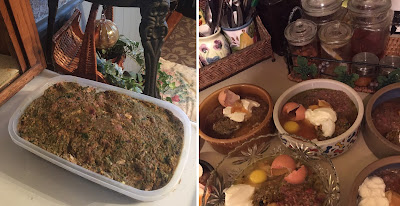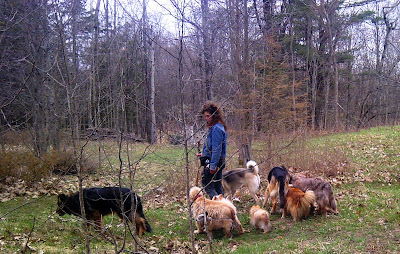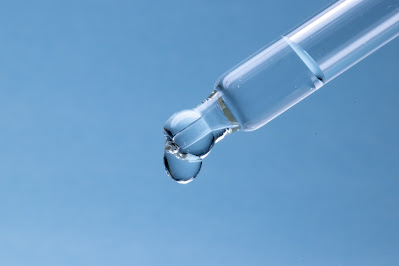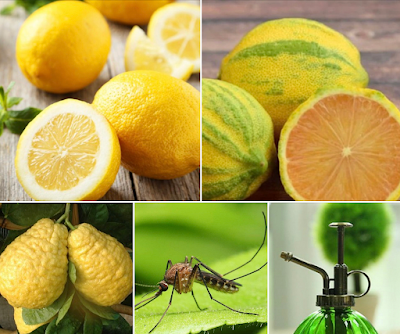Foods, Rich in Probiotics - Beneficial For Your Dog and Cat
Kefir and fresh
sauerkraut are inexpensive, readily available and are two of the best sources
of viable, high quality probiotics - in fact both of these foods contain more
strains of bacteria and more probiotics than most supplements.
Sauerkraut
typically contains 13 strains of bacteria and about 100 times more probiotics
than most probiotoc supplements. Kefir typically contains about 10 strains and
5 billion beneficial bacteria. Only the best of Probiotic Supplements for dogs
can match these two foods! Your dog gets all of the health benefits at a
fraction of the cost of prepared supplements.
Kefir
Kefir is a creamy, dairy based food made from the milk of cows or goats, sheep, coconut milk, rice or 1soy. Kefir is one of the oldest forms of cultured milk. Although it is similar to yogurt, kefir provides even more health benefits than yogurt.
History of Kefir
The use of Kefir dates back about 2000 years. It was
developed by shepherds in the Caucasian Mountains. The shepherds carried fresh milk
in leather pouches - on occasion the milk would ferment into grains and result
in an effervescent beverage. The grains were considered precious. Upon
discovery, the people of the mountain learned to culture kefir by talking the
kefir grains and mixing them with fresh, raw, cow or goat milk which they left
in goatskin leather bags to ferment. If you would like to learn more about the
history of kefir you can check this site out.
Active Ingredients in
Kefir
Fermented milk results in the
formulation of ‘gains’ that look like small cauliflower florettes. The kefir
grains are made up of casein and gelatinous colonies of friendly (beneficial)
bacteria - predominantly Lactic Streptococci, Lactobacillus caucasicus,
Leuconnostoc species, Saccharomyces kefir, Torula kefir. In addition the
kernels include some yeast. Kefir is the only cultured milk product that has
more than three types of beneficial mico-organisms, typically averaging about 10
strains of bacteria.
Benefits of Kefir
Lactobacilli (genus)
|
Streptococci/lactococci
(genus)
|
Yeasts
|
Strains…
Lb. acidophilus
Lb. brevis
Lb. casei ssp.alactosus Lb. casei ssp. rhamnosus Lb. casei
Lb. cellobiosus
Lb. delbrueckii ssp. lactis Lb. delbrueckii ssp. bulgaricus
Lb. fructivorans
Lb. helveticus ssp. lactis
Lb. hilgardii
Lb. kefir
Lb. lactis
Lb. kefiranofaciens
Lb. kefirgranum sp. no Lb parakefir sp. nov. |
Strains…
Lc. lactis ssp. lactis
Lc. lactis var. diacetylactis Lc. lactis ssp. cremoris S. lactis
S. salivarius ssp. thermophilus
Enterococcus durans Leuconostoc cremoris L. mesenteroides |
Candida kefir
C. pseudotropicalis K. bulgaricus K. fragilis / marxianus Kluyveromyces lactis Kluyveromyces marxianus var. marxianus Saccharomyces ssp.
Torulopsis holmii
|
Typically one tablespoon of kefir contains 5 billion beneficial bacteria. As a rich and concentrated source of beneficial bacteria the probiotics found in Kefir contribute to health in a wide variety of ways:
- Contains a substantial amount of B Complex vitamins, Calcium, vitamin A, Vitamin D, magnesium, phosphorus;
- Contains tyrptophan, and essential amino acid;
- Helps prevents illness;
- Is easily digestible;
- Is excellent for the immune system;
- Natural antibiotic and anti-fungal properties;
- Promotes anti-cancer and anti-tumour activity in the body;
- Promotes the faster healing of wounds;
Caution
Sugar and artificial sweeteners
are not good for dogs or cats so make sure you purchase plain, natural kefir.
How to Introduce Kefir
to Your Dog’s Diet
As with any new
foodstuff that you introduce to your dog’s and cat's diet you should go slow. The
probiotics in kefir are highly concentrated so give your dog’s and cat's system time to
adjust. For the first few days to a week cut the recommended dosage in half.
This will avoid stomach upset as your dog’s and cat's system adjusts to the increased
quantity of good flora in their GI tract. You can bring the daily dosage up to
the recommended amount over the space of a few days to a week or two. If your
dog has a negative reaction to the new food stop providing the food to your
dog. All of my dogs get kefir, sauerkraut and yogurt on a daily basis. None of
my 10 dogs have ever had a negative reaction to any of these food stuffs.
Recommended Daily Intake of Kefir or Yogurt
- 1x to 2x per day:
- X-Small size dogs and cats - 1 tsp to 1 tbs
- Small dogs - 1 tbs to 2 tbs
- Medium size dogs - 1/4 cup
- Large dogs - 1/3 cup to 3/8 cup
- Extra large dogs - 1/2 cup
You can read more about the health benefits of kefir and yogurt here .
Treats Made with Yogurt and Cheese
Sauerkraut
Sauerkraut is
made by: combining finely shredded fresh cabbage and salt (about 1.5% salt),
then packing the resulting mixture into an airtight container and allowing it
to ferment for three days at 23 degrees Celsius and then for an additional
eight weeks at a cooler temperature.
History of Sauerkraut
Although many
people think of sauerkraut as a German invented foodstuff, its true origins are
thought to be ancient China. The Chinese have been fermenting cabbage since 200
BC. Over 2,000 years ago, Chinese labourers responsible for building the Great
Wall of China ate sauerkraut as part of their daily diet - that early version
was made using rice-wine. It is assumed that sauerkraut made its way to Europe
1000 years later during the 13th century when Gengis Kahn plundered
China. The Romans carried barrels of sauerkraut on long campaigns - feeding it
to soldiers in order to prevent intestinal infections. The Dutch sea faring
traders ate sauerkraut on a regular basis as it could be easily kept on board
ship, do not require refrigeration and helped to prevent scurvy due to its high
vitamin C content. Captain James Cooke followed the example of the Dutch
sailors.
Active Ingredients in
Sauerkraut
Sauerkraut is a
dense source of a wide range of benefical lactic acid bacteria. The predominate
bacteria in sauerkraut is Lactobacillus plantarum. While commercially produced
sauerkraut does retain these valuable properties, fresh sauerkraut is higher in
beneficial organisms. Sauerkraut typically contains 13 strains of bacteria and
about 100 times more probiotics than most supplements while being a lot less
expensive! If you are purchasing rather than making your own sauerkraut, make
sure it is in the refrigerated section of the store to ensure that it contains
live bacteria.
One of the best
ways to ensure that you are providing your dog with fresh, probiotic sauerkraut
is to make it yourself! If you would like to see some simple but very good
sauerkraut recipes you can read this article. Sauerkraut is quick, easy and very inexpensive to make.
Benefits of Sauerkraut
Aids
in the digestion process;
Boosts
the immune system;
Helps
prevent cancer (sauerkraut contains compounds called isothiocyanates which
protect against cancer);
Fights
E. Coli, salmonella and candida;
Has
anti-inflammatory properties (inflammation can cause some cancers);
High
in Vitamin A, B, C and E;
High
in Minerals calcium and magnesium, folate, iron, potassium, copper and
manganese;
High
in phytonutirent antioxidants;
Helps
alleviate anxiety and depression;
It
helps generate omega-3 fatty acids;
It
can help reduce allergy symptoms;
It
is very low in fat and calories.
Each batch of
fresh, raw sauerkraut contains different species of beneficial probiotics in
different proportions. The table below provides a list of the bacteria species
found in sauerkraut.
Main Species
|
Secondary
Species
|
- Lactobacillus brevis
- Lactobacillus plantarum
- Leuconostoc mesenteroides, - Pediococcus
pentosaceus
|
- Lactobacillus coryniformis
- Lactobacillus curvatus
- Lactobacillus sakei
- Lactococcus lactis subsp lactis
- Lactobacillus paraplantarum
- Leuconostoc argentinum
- Leuconostoc
citreum
- Leuconostoc
fallax
- Weissella
species
|
In
addition, 3.5 ounces (100 grams) of fresh sauerkraut contains…
Nutritional
Information
|
Vitamins
|
Minerals
|
|
Calories
|
23
|
15 mg Vitamin C
|
48mg Calcium
|
Carbohydrates
|
4.3g
|
.21mg Vitamin B6
|
1.5mg Iron
|
Fat
|
14g
|
1.5mg Vitamin K
|
288mg Potassium
|
Protein
|
9mg
|
14mg Magnesium
|
|
Sodium
|
661mg
|
||
Water
|
92g
|
||
Caution
Alcohol is poisonous to dogs so do not
purchase wine sauerkraut. Make sure you purchase or make water based sauerkraut
rather than wine based sauerkraut.
How to Introduce
Sauerkraut to Your Dog’s Diet
As with any new
foodstuff that you introduce to your dog’s diet you should go slow. The
probiotics in sauerkraut are highly concentrated so give your dog’s system time
to adjust. For the first few days to a week cut the recommended dosage in half.
This will avoid stomach upset as your dog’s system adjusts to the increased
quantity of good flora in their GI tract. You can bring the daily dosage up to
the recommended amount over the space of a few days to a week or two. If your
dog has a negative reaction to the new food stop providing the food to your
dog. All of my dogs get kefir, sauerkraut and yogurt on a daily basis. None of
my 10 dogs have ever had a negative reaction to any of these food stuffs.
Recommended Minimum Daily Intake of Sauerkraut
- Small size dogs - ½ tsp to 1 tbs
- Medium size dogs - 1tbs to 2 tbs
- Large dogs - 2 tbs to 3 tbs
Holistic Diet, Nutrition, Wellness Services Tailored to Your Individual Dog and Cat
For information about my holistic diet, nutrition and wellness services, visit my holistic wellness services page.
Maintain good health | Address acute and chronic health issues | Pre and post surgery support and recovery
My holistic wellness services are available worldwide via video consultation.
🌎 USA | Canada | UK | Europe | Australia | New Zealand | Asia | South and Central America | Africa | UAE
📱FaceTime | Facebook | Skype | WhatsApp
To set-up your holistic wellness consultation get in-touch via email, go to my contact me page.
Holistic Behavioral Services for Your Dog
For information about my holistic behavioral services, visit my holistic behavioral services page.
For dogs of all ages, sizes and breeds.
My behavioral services are available worldwide via video consultation.
🌎 USA | Canada | UK | Europe | Australia | New Zealand | Asia | South and Central America | Africa | UAE
📱FaceTime | Facebook | Skype | WhatsApp
To set-up your holistic behavioral session get in-touch via email, go to my contact me page.
Affiliations to Companies
✓ None.
✓ I don't sell food, supplements, or other products.
✓ I'm not aligned with any companies.
Article and graphics by Karen Rosenfeld.











